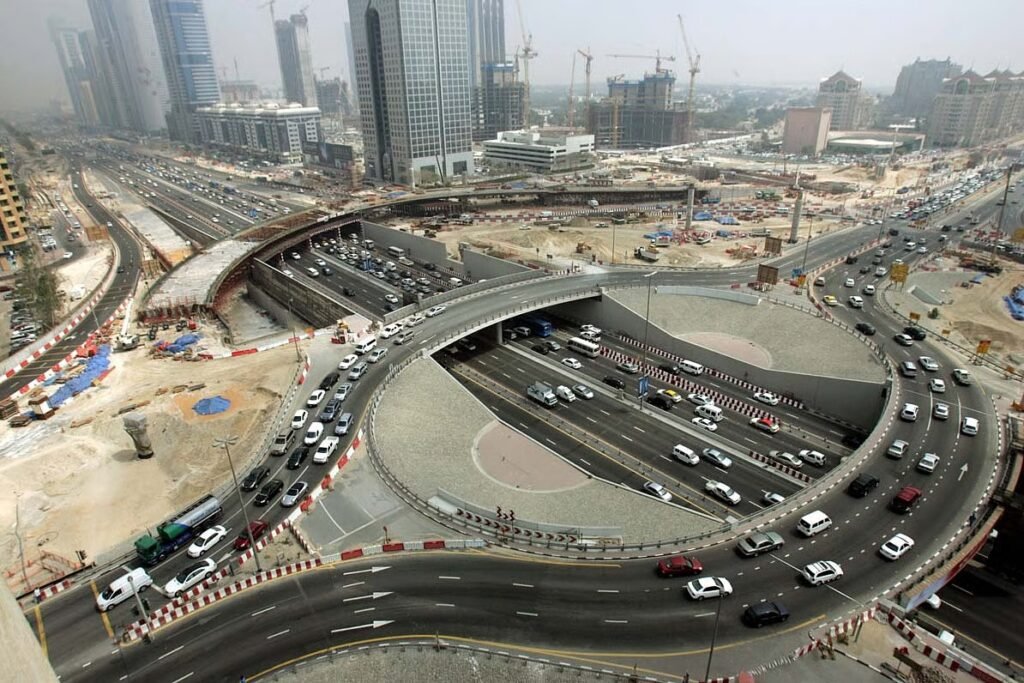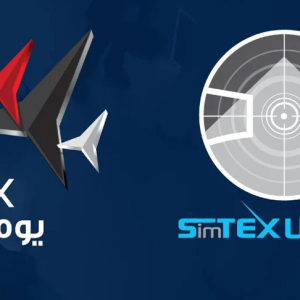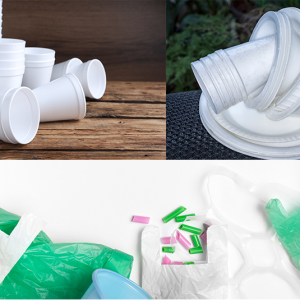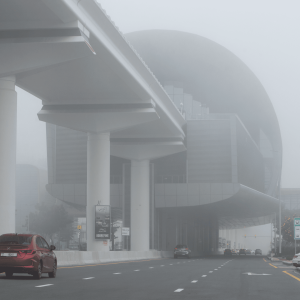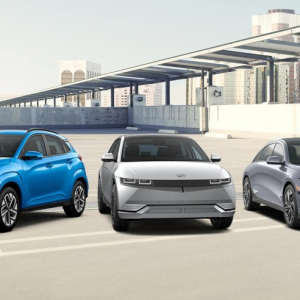Dubai is a city known for its futuristic skyline, innovative architecture, and ambitious infrastructure. Amidst this modern marvel lies a hidden gem in the city’s transport history – Dubai’s first interchange at Defence Roundabout. This historic site symbolizes the city’s journey from a small desert town to a global metropolis. Understanding its story allows us to appreciate how far Dubai has come and the vision that shaped its modern roads.
The Early Days of Dubai Roads
Before the advent of interchanges and flyovers, Dubai’s roads were simple and unpaved. Traffic was sparse, and roundabouts like Defence Roundabout served as essential junctions connecting key parts of the city. Defence Roundabout was more than a traffic point; it was a meeting place, a landmark for locals, and a symbol of progress.
The growth of Dubai in the 1970s and 1980s brought a surge in vehicles and congestion. Roads that once seemed sufficient quickly became overwhelmed. City planners faced a critical challenge: how to maintain smooth traffic flow while accommodating rapid urban development.

The Vision Behind Dubai’s First Interchange
Dubai’s first interchange was conceived as part of a broader plan to modernize the city’s transport network. The idea was not merely to create a functional road but to build a system that could handle increasing traffic volumes while reflecting Dubai’s ambition for innovation. Engineers studied international models and combined them with local conditions to design a junction that was both practical and iconic.
The interchange replaced the traditional roundabout with a multi-level structure. This innovation allowed vehicles to move without stopping at traffic lights, dramatically improving travel efficiency. For many residents, it was a glimpse into the future – a promise that Dubai could combine tradition with modern engineering.

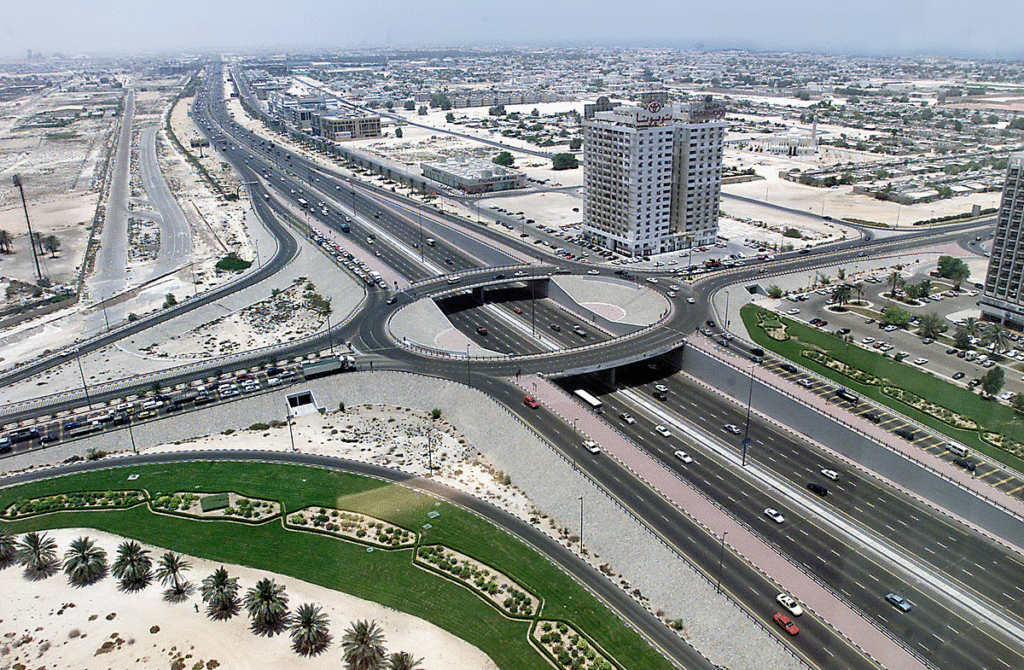
Construction Challenges and Achievements
Constructing Dubai’s first interchange was no small feat. Engineers had to work with limited local resources and navigate the city’s evolving landscape. They faced challenges such as extreme heat, shifting sands, and coordinating construction in an area that was already a vital traffic hub.
Despite these obstacles, the project was completed on time, and the results were revolutionary. The interchange not only reduced traffic congestion but also set a benchmark for future infrastructure projects. It demonstrated that Dubai could implement large-scale projects with precision and efficiency, a philosophy that continues to guide the city today.
Transforming Traffic and City Life
The impact of Dubai’s first interchange extended beyond traffic management. It improved access to commercial areas, facilitated faster commutes, and contributed to economic growth. Businesses flourished as goods and services moved more efficiently, and residents experienced a smoother daily life.
Moreover, the interchange symbolized a shift in urban planning. Dubai was no longer just a desert city; it was an emerging metropolis ready to compete on a global scale. Defence Roundabout became a case study in how strategic infrastructure could transform both traffic and city life.
Preserving History Amid Modernization
As Dubai continues to grow, many old landmarks have been replaced by towering skyscrapers and wide highways. However, the significance of Defence Roundabout remains. Efforts to preserve its history remind residents and visitors of the city’s journey and the early visionaries who shaped modern Dubai.
Even today, when driving through the area, one can sense the layers of history embedded in the roads. The interchange stands as a tribute to Dubai’s pioneering spirit and its dedication to innovation. It bridges the gap between the past and the present, showing that progress does not erase history but builds upon it.
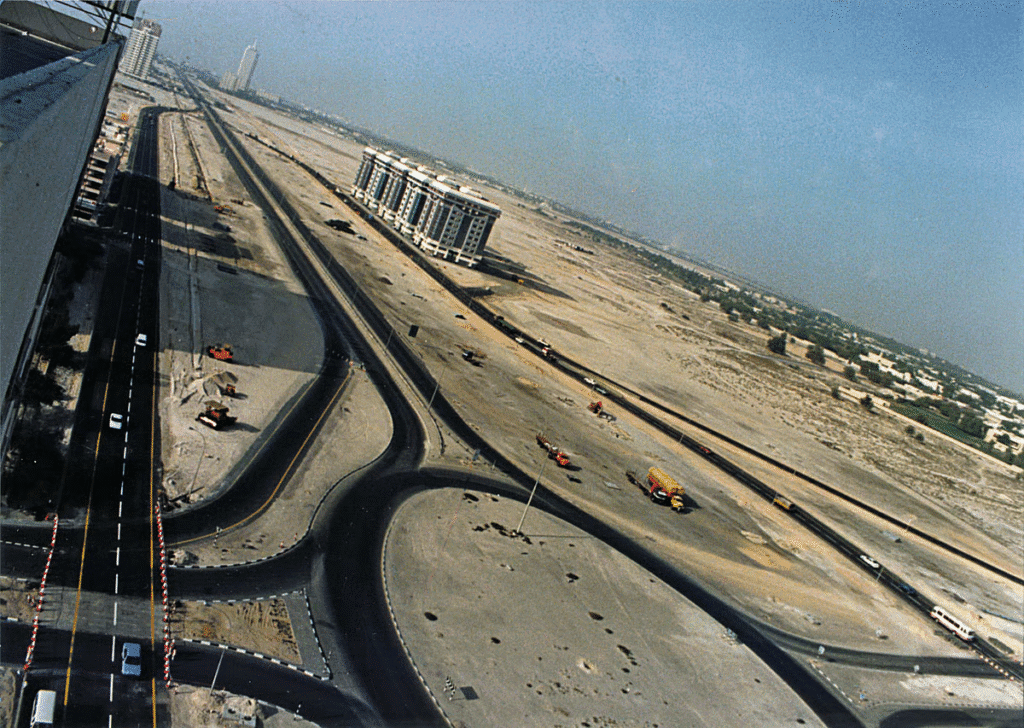
Lessons from Dubai’s First Interchange
Dubai’s first interchange offers several important lessons. It demonstrates the value of forward-thinking urban planning, the importance of integrating technology with tradition, and the impact infrastructure can have on a city’s growth. By studying projects like Defence Roundabout, city planners worldwide can learn how to anticipate future needs and implement solutions that last for decades.
The interchange also serves as a reminder that even the smallest junctions can hold great historical and cultural significance. Dubai’s success story is built not only on skyscrapers and luxury but also on intelligent planning and respect for its roots.
Conclusion: A Journey Through Time
Dubai’s first interchange at Defence Roundabout is more than a piece of infrastructure. It is a symbol of the city’s evolution, a testament to visionary planning, and a bridge between past and future. As Dubai continues to expand, projects like this remind us that progress is a journey. Every road, roundabout, and interchange carries a story – a story of ambition, innovation, and transformation.
Visiting or even learning about Defence Roundabout offers insight into Dubai’s remarkable journey. From a simple roundabout to a modern interchange, it encapsulates the city’s determination to blend history with progress and continue building a future that is both visionary and human.
Do follow UAE Stories on Instagram
Read Next – Hatta Dam Goes Big: Dubai Stand Up Paddle 2025 Expands

